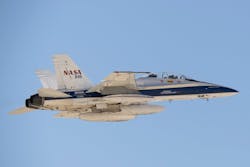NASA tests tech for landing in difficult terrain
WASHINGTON - Advancing new hazard detection and precision landing technologies to help future space missions successfully achieve safe and soft landings is a critical area of space research and development, particularly for future crewed missions. To support this, NASA’s Space Technology Mission Directorate (STMD) is pursuing a regular cadence of flight testing on a variety of vehicles, helping researchers rapidly advance these critical systems for missions to the Moon, Mars, and beyond, Loura Hall writes for NASA. Continue reading original article.
The Military & Aerospace Electronics take:
5 June 2025 - “These flight tests directly address some of NASA’s highest-ranked technology needs, or shortfalls, ranging from advanced guidance algorithms and terrain-relative navigation to lidar-and optical-based hazard detection and mapping,” said Dr. John M. Carson III, STMD technical integration manager for precision landing and based at NASA’s Johnson Space Center in Houston.
Since the start of the year, NASA’s Space Technology Mission Directorate (STMD) has backed flight tests of four advanced precision landing and hazard detection technologies developed by NASA, academic institutions, and private industry. These technologies have been demonstrated aboard a range of platforms—including a suborbital rocket, a high-speed jet, a helicopter, and a rocket-powered lander testbed. In just four months, four separate systems have been tested across four distinct flight vehicles.
The agency used real-time aping lidar onboard a helicopter, guidance software to land an autonomous spacecraft, lidar for navigation onboard its F/A-18, and vision systems for navigation and hazard detection.
Related: Safran and ATR develop machine learning 'Smart Lander' to analyze hard landings
Related: Honeywell tests sensors for UAM autonomous landing
Jamie Whitney, Senior Editor
Military + Aerospace Electronics
